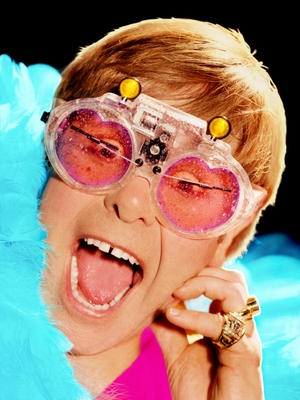Need a new cue? Here's what you do!

Sometimes you use a body cue to elicit behavior, and you'd like to transfer the cue to a verbal cue. Alternatively, you may want to transfer your verbal cues to body cues, note cards with words for behaviors written on them, whistle cues, even scent cues.
When selecting a new cue, make sure it is both easy for the dog to perceive and distinct from existing cues (For example, "bow" and "down" sound very similar; this can be confusing for dogs. If you have a verbal "down" as your cue to the dog that she should lie down; you may want to call a play bow "greet" or "curtsey").
Regardless of what type of cue you currently use to elicit the behavior, you can always transfer the cue to a new/different cue. Let's say that we have a body signal as a cue for Mokie's sit behavior (hand extended out from waist, palm up, move towards shoulder) and that we want to transfer the cue so that she will respond to the verbal cue "sit." Here's the protocol:
New cue, old cue, behavior, click, treat
Our cue transfer session will look like this:
Facing Mokie, I say the word "sit" immediately followed by the presentation of the body cue. When Mokie sits, she earns a click and a treat. I'll toss her treat rather than feed her in position to set her up for another opportunity to earn reinforcement. Repeat approximately ten times.
Now, I will stand in front of Mokie and give the verbal "sit" cue while keeping my hands still. I'm changing the picture here, so it may be a bit confusing for the dog - they may offer a reluctant, hesitant, or partial sit or no sit at all. If they offer a partial or reluctant sit, click and treat! Even if the behavior is not polished and to my current criteria for the body signal cue response, what I am testing here is not the behavior but Mokie's understanding of the new cue. She's trying to make the connection even though the picture has changed, and I need to make sure that I let her know she is on the right track.
If she does not offer the behavior at all, and stares at me, it means she hasn't yet made that critical connection. In this case, it is better to do another five cue transfers (New cue, old cue, behavior, click, treat) and end the session for the day. The next day I will resume the cue transfer sessions, do another ten repetitions of the protocol, and then once again test her response to the new cue again. Dogs that have never learned cue transfers before may take a bit longer to "catch on" than dogs for whom cue transfers are "old hat."
You will need to "proof" the new cue for all relevant aspects of fluency: distraction, distance, duration, fluency, speed, precision, and the ultimate goal - stimulus control. The good news is that if your original cue was well-proofed to fluency, the process of proofing the new cue will be significantly faster the second time around.
As mentioned earlier, you can transfer the cue to virtually anything. I offer a "teach your dog to read" session in classes where we transfer existing cues to signs that read "sit," "down," "stay," etc. Students think this is fun and a reading dog is always a crowd pleaser! For KPA, I taught Mokie to play the piano. The attached image is her cue, proof that you can transfer a cue (mine was originally "piano cub") to virtually anything!
Happy cue transfers, until next time!




